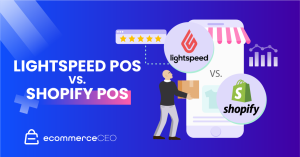Being someone who specializes in ecommerce strategy — and who had never before seen the words “livestream” and “shopping” together — I thought I’d check it out.
The event, which marked the official launch of Nordstrom Livestream Shopping, featured the latest Burberry collection from designer José Ramón Reyes who showed the audience how to style runway looks.
“Livestream Shopping enables us to stay closer to the customer with interactive and engaging experiences that allow for discovery, personalization, and service at scale,” says Fanya Chandler, senior vice president at Nordstrom.
While I wouldn’t stay this event allowed for personalization or service at scale, it’s an exciting opportunity for discovery. Learn more about livestream shopping, and get my breakdown of the current pros and cons for brands.
What Is Livestream Shopping?
Livestream shopping, which is also called streaming ecommerce or live selling, is when brands or retailers leverage live video streaming technology to sell products to viewers online. Livestream shopping can take place on social media or using a third-party tool on a direct-to-consumer (D2C) site.
If you’ve ever watched a shopping channel like QVC or the Home Shopping Network, you understand the basic format of livestream shopping.
But unlike TV shopping channels, livestream shopping allows the audience to buy products directly on the screen — versus calling a number. It also enables more interaction with and between shoppers, as most live shopping events offer chat feeds and product-ranking capabilities that allow the hosts to view product popularity in real-time.
A Growing International Ecommerce Trend
Livestream shopping has increased in popularity since the start of the COVID-19 pandemic, with Coresight Research predicting that it will grow to $25 billion in annual U.S. sales by 2023.
While this online shopping trend has increased recently in the U.S., it has been an enormously popular shopping option in Asia for years, according to CNBC. In China alone, it drove about $125 billion in sales in 2020 — up from $62 billion in 2019.
Conversion rates for livestream shopping in China are exceptionally high as well, with expert Mary Ghahremani, CEO of live video shopping platform provider Bambuser, highlighting 20% to 40% conversion rates.
When you consider that well-optimized product pages convert at much lower rates, you can see how this trend is too intriguing to ignore — despite any skepticism.
Source: Nordstrom, Vimeo
Livestream Shopping Pros for Brands and Retailers
Attending this Nordstrom Live Shopping event highlighted several exceptional opportunities for brands and retailers.
Audience Interaction Offers Huge Opportunities
Livestream shopping is essentially an infomercial — as it should be. Combine this with the fact that you can interact with the audience, and it becomes an incredible opportunity to inform your customers and build brand loyalty.
It’s also possible to have a dialog with the audience. They can ask questions, request specific demonstrations, discuss merchandising and accessorizing, and more. Essentially, it’s bringing the in-store shopping experience to ecommerce.
Livestream Shopping Drives Engagement
Livestream shopping attracts a more engaged shopper. These shoppers tend to stay on longer, according to Ghahremani, who highlighted an average of nine minutes on the livestream per customer, according to Bambuser insights, which is three to four times higher than a shopper browsing on an average website.
Virtual Events Can Attract a Wider Audience
Livestream shopping is also an event. In the days of quarantined isolation, virtual events should be the center of a brand’s marketing strategy. They’re cheaper, and they can attract a wider audience.
Livestream Shopping Could Build Communities
Livestream shopping is a communal activity. You’re there with other shoppers who validate your tastes and give you a sense of belonging. This community can also create an unspoken sense of competition that the products you’re interested in may not be available for very lon
Source: Nordstrom
Livestream Shopping Cons for Brands and Retailers
Production quality for livestream shopping events can vary widely, and the Nordstrom Live Shopping event also highlighted several cons and areas for improvement.
Technology Glitches Pose Challenges
The technology just wasn’t there during the Nordstrom Live Shopping event. The sound was choppy, and at times I couldn’t hear the host. The video quality was also like that of a bootleg movie I downloaded on LimeWire.
The user experience (UX) of the platform also seemed a little off. I couldn’t see the name of the products, but there was a prominent oversized thumbs-up button that didn’t offer any feedback when I clicked on it. (It only displayed a generic message for everyone to see.)
The video also wasn’t clickable. Although this type of technology isn’t something I’ve previously engaged with, I found myself wanting to click on the items the model was wearing anyway.
Content Inconsistencies Drive Drop-Off
The images on the side panel didn’t match what the model was wearing. You had to scroll and find the items that were being featured, which was annoying.
Even worse, not all the products the model was wearing were featured on the site. (Shoes and belts were particularly neglected). Styling events that highlight complete outfits create an ideal scenario for buying items in a set, and yet the product pages weren’t arranged in this way.
Content Can Stunt Community Building
The moderator in the chat feed couldn’t keep up with the questions coming from the audience. And since the chat wasn’t threaded, you couldn’t see the answers — so asking questions was essentially useless.
There was also no voting up or down, so it wasn’t much of a community-building tool. The host didn’t engage much with the audience. He sounded like he was on a runway fashion show more than anything. To be fair, runway shows are probably the only public speaking experience he may have.
Livestream Shopping Will Continue to Evolve
While livestream shopping still has a long way to go, this growing trend could post an enormous opportunity for brands and retailers to test and learn. If used properly, livestream shopping has incredible potential. And it’s always better to be too early to a trend like this than too late.
Learn more about winning ecommerce strategies in our on-demand webinar, which breaks down the best practices brand leaders are adopting to drive sales across the digital shelf.



